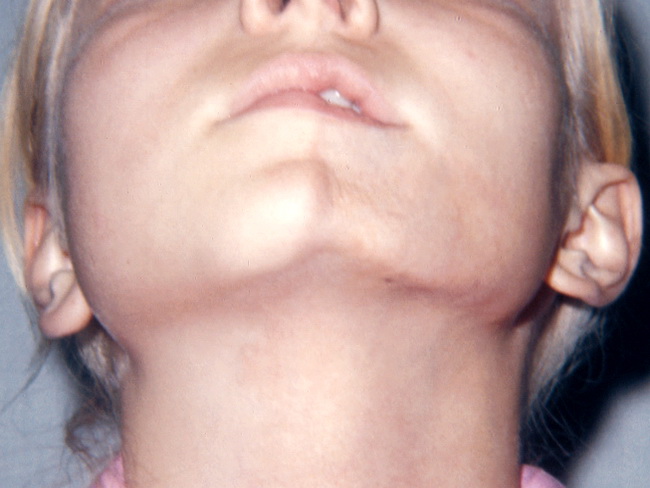Localized Scleroderma : Morphea


Comments:
Localized scleroderma (morphea) is a group of related disorders characterized by dermal sclerosis and loss of subcutaneous fat. It is more common in children and young adults with a peak incidence between the age 20 and 40 years. There is a strong female predilection. Morphea consists of many variants, including plaque-form (the most common form), linear morphea, bullous morphea, guttate form, generalized morphea, subcutaneous scleroderma (morphea profunda), and pansclerotic morphea (seen in children). Although this is a self-limiting disease with a good prognosis, it's linear variant can still cause severe disfigurement. Systemic symptoms and Raynaud's phenomenon are not present. Children with linear morphea may develop facial hemiatrophy (Romberg's disease) as shown in this photograph. Rare patients develop partial seizures due to CNS involvement.



